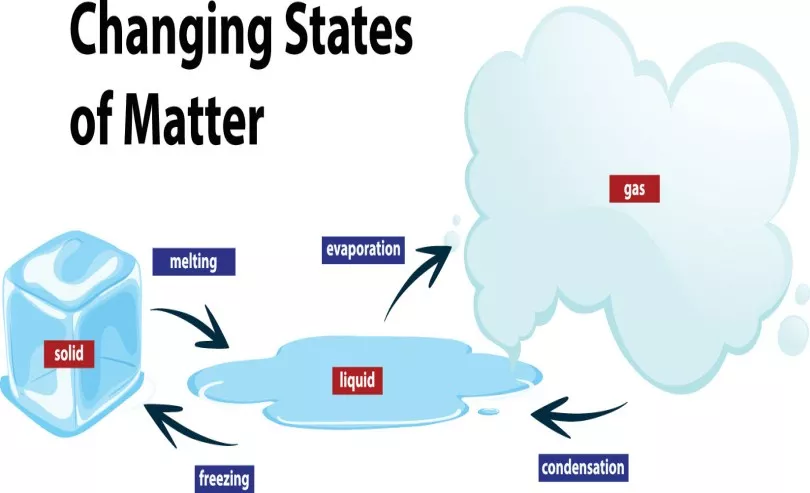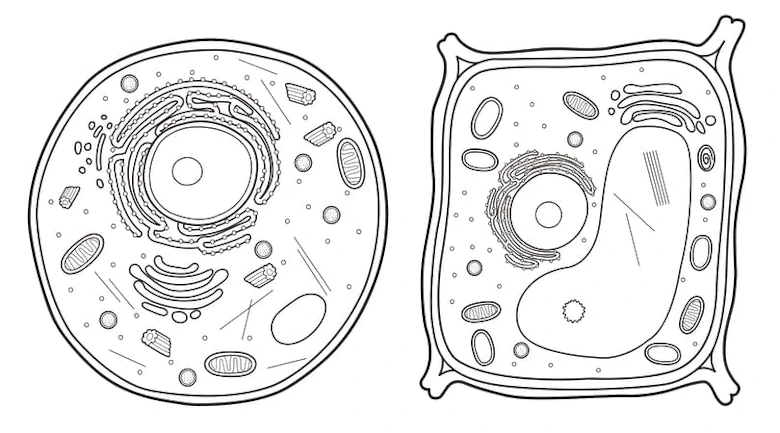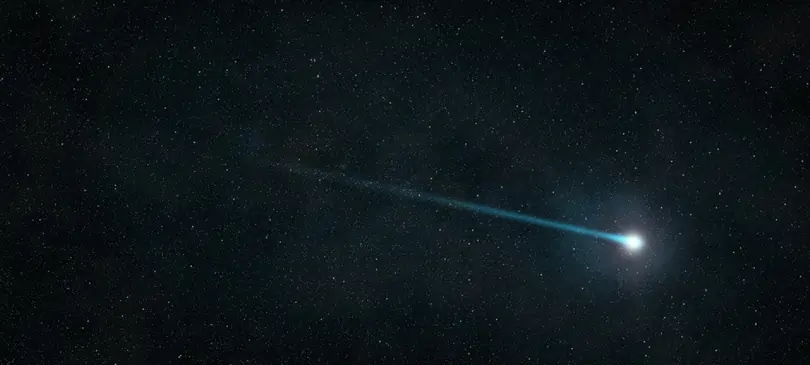Human Circulatory System
In this article, you will be introduced to the human circulatory system based on the Singapore Primary 5 Science Syllabus. We will focus on the following three main aspects:
- Parts of the human circulatory system and their functions
- Flow of blood in our body
- Factors affecting heart rate
Human Circulatory System
The circulatory system is the main transportation system for our body. It transports:
- Digested Food, Oxygen and Water to parts of our body where they are needed
- Carbon Dioxide and Waste Materials to organs where they can be removed from our body
The parts of our body that help to transport substances around our body make up our circulatory system. We shall now examine what the various parts of our circulatory system and their functions are.
Parts of Human Circulatory System and Their Functions
The human circulatory system consists of the heart, blood vessels and blood.
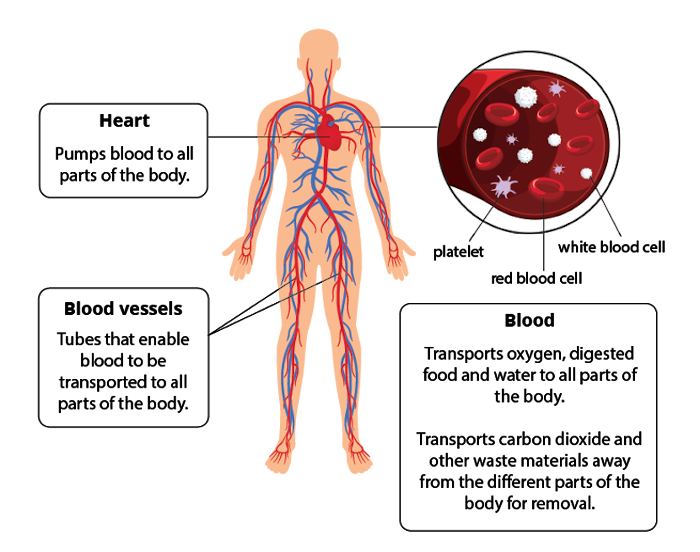
Heart
- The heart is a strong muscular organ that lies between our two lungs in the chest. It is slightly closer to the left side of our body.
- The heart has four chambers that can be filled with blood.
- The heart muscle contracts and relaxes continuously to pump blood around the body all the time.
- It is protected by our ribcage.
Blood vessels
- Blood vessels are tubes that run through all parts of the body transporting blood.
- There are three types of blood vessels, namely the arteries, veins, and capillaries. They vary in size and thickness.
- Some blood vessels transport blood from our heart to all parts of our body. Other blood vessels transport blood from all parts of our body back to our heart.
Blood
- Blood is the red fluid that flows in our body.
- It transports digested food, oxygen, and water to all parts of the body.
- At the same time, blood transports carbon dioxide and other waste materials away from different parts of our body for removal.
Flow of Blood in Our Body

- From the heart to all parts of the body
Blood that has flowed past the lungs will be rich in oxygen and will be transported to the heart for it to be pumped to all parts of the body.
Other than oxygen, blood will also transport digested food and water from the digestive system to all parts of our body.
The different parts of our body will use the digested food and oxygen to release energy and carry out their respective functions.
- From all parts of our body back to the heart
Carbon dioxide and other waste materials will be transported away from the different parts of the body by blood that circulates around the body.
When blood flows back to the heart, it will be pumped to the lungs where carbon dioxide is removed and oxygen enters the bloodstream. The blood will also be pumped to various organs for the other waste materials to be removed from our body.
Heart Rate
When the heart relaxes, blood rushes in to fill the heart. When the heart contracts, blood is forced out of the heart. Each cycle of contraction and relaxation is called a beat. An average healthy adult’s heart beats at a rate of about 60 to 100 times per minute when at rest. The heart rate changes with one's health condition, age, and the type of activity the person is engaged in.
When we exercise, our heart pumps faster because our body needs more digested food and oxygen to release more energy. Deoxygenated blood also needs to be transported to the lungs more rapidly for removal of carbon dioxide produced during exercise.
Conclusion
In this article, we learnt about the parts of our circulatory system and their respective functions. We have also examined the flow of blood in our body and the factors that affect our heart rate.
Test Your Concepts
Answer the following questions based on the concepts that we have covered in this article. If you are unclear, you may want to revisit the relevant section to revise the concepts.
Question 1:
Which of the statements are true about the heart?
- The heart pumps blood to all parts of the body
- The heart is also part of the respiratory system.
- The heart pumps blood by relaxing and contracting.
- The heart only pumps oxygen to all parts of the body.
Choose the correct option
- A and B only
- B and D only
- A and C only
- C and D only
Solution:
(3) A and C only
Explanation:
Statements A and C are correct.
Statement B is incorrect as the heart belongs to the circulatory system.
Statement D is incorrect as the heart pumps blood to transport different substances to different parts of the body.
Question 2:
Which of the following diagrams correctly shows the flow of blood in a human body?

Solution:
(2)
Explanation:
Options \(1\) and \(4\) are incorrect as the blood does not flow back from the legs to the heart.
Option \(3\) is incorrect as the blood from the lungs should have flowed through the heart first before reaching the head.
Question 3:
Madeline took a slow walk to a nearby stadium and rested for several minutes. Then, she ran fast for two rounds around the track before resting on a nearby bench for ten minutes.
Which of the following graphs best shows Madeline’s heart rate from the time she started walking to the time after she had rested on the bench for ten minutes?
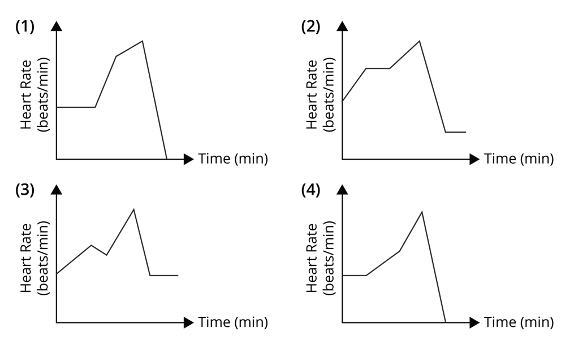
Solution:
(3)
Explanation:
As Madeline started walking, there would be an increase in her heart rate. When she rested before her run, her heart rate would decrease. Once she started running, her heart rate would increase to a maximum as that was the most vigorous activity that she was doing. When her run ended, she started to rest, hence her heart rate would decrease back to her normal resting heart rate.
Test Yourself
Which one of the following systems helps to transport oxygen to all parts of the body?
Most substances are transported with the help of the circulatory system.
Beside the blood and the heart, which of the following consist of parts of human circulatory system?
Parts of human circulatory systems are : heart, blood, veins, arteries and capillaries.
Arteries, capillaries and veins are the different types of blood vessels in our body.
Which of the following are the functions of the circulatory system?
1: Enables the body to move.
2: Enables the exchange of gases with the surroundings.
3: Carries oxygen and digested food to all parts of the body.
4: Carries waste materials away from all parts of the body to be removed.
Statement 1 describes the function of the muscular system.
Statement 2 describes the function of the respiratory system.
Statement 3 and 4 describes the function of the circulatory system.
Which of the following systems work together to ensure the transport of gases?
1. Digestive system
2. Circulatory system
3. Respiratory system
Choose the correct option
In the respiratory system, the lungs take in oxygen into the body. The oxygen passes into the blood, where the circulatory system will transport the oxygen to all parts of the body. At the same time, the circulatory system will also transport carbon dioxide away from all parts of the body back to the lungs to be removed.
The picture below shows the tubes in a plant which carry food to all parts of the plant.

Which one of the following systems in a human being has tubes which are similar in function to the tubes in the plant?
In the circulatory system, there are tubes called blood vessels which allow the transportation of food substances to all parts of the body.
The diagram below shows a system in our body.

Which of the following processes take(s) place in this system?
1: Food is broken down into simple substances.
2: Undigested food is passed out as waste from the body.
3: Waste materials are removed from different parts of the body.
4: Digested food, water and oxygen are carried to all parts of the body.
Choose the correct option
The diagram shows the circulatory system.
Statement 1 and 2 describe the processes taking place in the digestive system, hence they are incorrect.
Only Statement 3 and 4 describe the processes taking place in the circulatory system.




 SG
SG  VN
VN 

